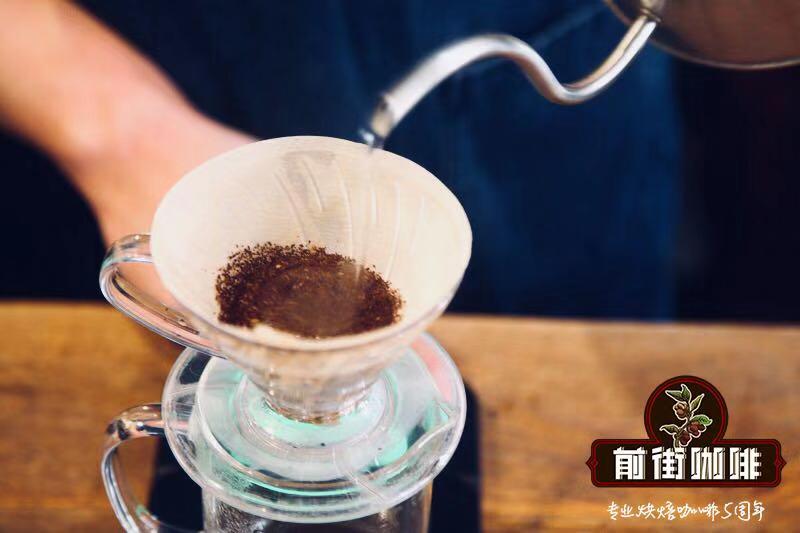Introduction of Costa Rican Coffee producing area | what should be paid attention to when baking Costa Rican coffee beans

Professional coffee knowledge exchange more coffee bean information please follow the coffee workshop (Wechat official account cafe_style)
We often say "regional flavor". Coffee produces a unique flavor because of its different altitude, soil, precipitation, climate, windward, leeward, sunny and sunny. Each slight difference will affect the final presentation of coffee flavor.
Costa Rican producing area
Its name means "Beautiful Coast". It is located in Latin America, bordering Nicaragua in the north and Panama in the south. Subvert the concept of the four seasons of the year, here is only divided into dry and rainy seasons, April to December is the rainy season, more precipitation, the end of December to April of the following year is the dry season, the annual average smell is also more than 20 ℃.
The history of coffee cultivation in Costa Rica can be traced back to the 18th century. For a hundred years, coffee has played an important role in the economy, where people have been dealing with coffee for generations.
Costa Rica also has seven famous coffee producing areas, namely: the Duriaba Valley (northeast of the capital San Jose), the Central Valley (northwest of San Jose), the Western Valley (west of the capital), the Sanhe District (east of the capital), Blanca (southeast of the capital), Orosi (north of the capital) and Tarazu (south of the capital). Among them, the Central Valley, Tarazhu and Sanhe producing areas are the most famous.
The flavor of Costa Rican coffee gives people a steady feeling, it is quite mild and supple, mellow, mellow, sweet and bitter, compatible and well balanced.
Baking attention
Before baking a new bean, we will first learn about the bean and the flavor given by the raw bean merchant, and then try to bake a few stoves based on this information, and then adjust it according to the cup test results.
Kaddura and Kaduai are common in American beans, which look yellowish green and are typical of honey-treated coffee beans, with fresh orange acidity and a hint of fermented fruit.
This bean is 2018 production season, the water content is relatively high, and the growth altitude is about 1950 meters, and the bean quality is hard, so at the beginning, we chose to gradually reduce the fire and prolong the dehydration time for baking. Three stoves were baked and cup tests were carried out.
[the first batch] has a hint of fermentation and complex floral aromas, sipping with aromas of citrus, orange, berries, melons and raisins; [second] with aromas of jasmine and fermented wine; sipping with aromas of sweet orange, plum, caramel, raisins and rum; [third] with flavours of cocoa, orange, Sydney, grapefruit peel and smoke.
Although the three stoves perform well in aroma and cleanliness, the overall flavor tends to be light and the taste is relatively thin.
We think the performance of [the first furnace] will be slightly better in the three furnaces, but although there is nothing wrong with it as a whole, it is not the flavor we want. So we adjusted the baking method, and this time we chose the way of rapid dehydration and increased firepower to bake, and also baked three stoves of samples.
END
Important Notice :
前街咖啡 FrontStreet Coffee has moved to new addredd:
FrontStreet Coffee Address: 315,Donghua East Road,GuangZhou
Tel:020 38364473
- Prev

What is the special flavor of Costa Rican black honey coffee beans | characteristics of Costa Rican black honey treatment
Professional coffee knowledge exchange more coffee bean information Please follow the coffee workshop (official Wechat account cafe_style) talking about the treatment of coffee, in addition to washing, sun exposure, there is also a quite common way of treatment, honey treatment, which is between washing and sun treatment, which is very common in Costa Rica. Characteristics of honey treatment peeled and sunburned in Brazil spread to Costa Rica
- Next

Home espresso machine recommended | what should I do if I want to make espresso at home?
Professional coffee knowledge exchange more coffee bean information Please follow the coffee workshop (Wechat official account cafe_style) at home if you want to get an Italian coffee machine, how should you choose? There is no shortage of ways to make coffee in this world. If you have no demand for taste or no shame about your coffee taste, or even the trans fatty acid in your coffee partner
Related
- Beginners will see the "Coffee pull flower" guide!
- What is the difference between ice blog purified milk and ordinary milk coffee?
- Why is the Philippines the largest producer of crops in Liberia?
- For coffee extraction, should the fine powder be retained?
- How does extracted espresso fill pressed powder? How much strength does it take to press the powder?
- How to make jasmine cold extract coffee? Is the jasmine + latte good?
- Will this little toy really make the coffee taste better? How does Lily Drip affect coffee extraction?
- Will the action of slapping the filter cup also affect coffee extraction?
- What's the difference between powder-to-water ratio and powder-to-liquid ratio?
- What is the Ethiopian local species? What does it have to do with Heirloom native species?

